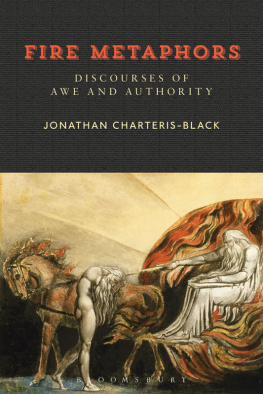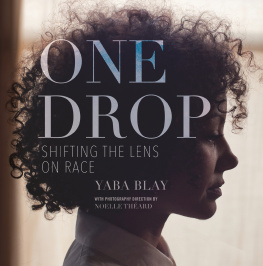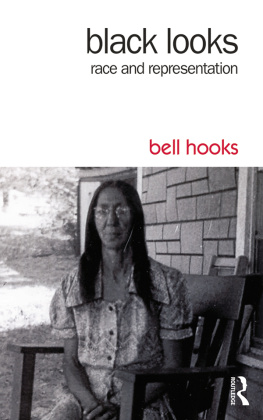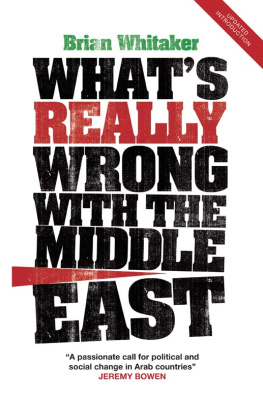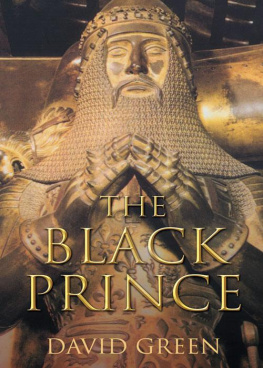Black Metaphors
THE MIDDLE AGES SERIES
Ruth Mazo Karras, Series Editor
Edward Peters, Founding Editor
A complete list of books in the series
is available from the publisher.
BLACK METAPHORS

How Modern Racism Emerged
from Medieval Race-Thinking
Cord J. Whitaker

Copyright 2019 University of Pennsylvania Press
All rights reserved. Except for brief quotations used for
purposes of review or scholarly citation, none of this book
may be reproduced in any form by any means without written
permission from the publisher.
Published by
University of Pennsylvania Press
Philadelphia, Pennsylvania 19104-4112
www.upenn.edu/pennpress
Printed in the United States of America on acid-free paper
1 3 5 7 9 10 8 6 4 2
A catalogue record for this volume is available from
the Library of Congress
ISBN 978-0-8122-5158-6
For Lesley, London, and Sharon,
the stars whose lights shimmer
upon my sea, interminably
CONTENTS


The evidence is overwhelming: race matters. And it has mattered for far longer than is generally recognized. Many studies consider race an exclusively modern phenomenon: what we understand as racial ideology, predicated on the notion of an insurmountable difference between black and white, has been traced to the seventeenth century, to the increased economic expediency of chattel slavery in the Americas. This book seeks to push the timeline back much further, to at least the European Middle Ages, with roots in the medieval reception of classical antiquity.
This books aim is to investigate the relationship between the idea of blackness and the notion of sinfulness in the literature and culture of the English Middle Ages, with influences from continental European texts as well. Though the main target of Black Metaphors is the Middle Ages, the book also asserts the profound implications of the historical nexus of blackness and sinfulness for modern life and culture. Indeed, I argue that this conceptual intersection is behind current controversies over racialized policing and the resultant Black Lives Matter movement: these have significantly impacted media and politics since the movements founding in 2012 in response to the shooting death of seventeen-year-old Trayvon Martin; the movement rose to further prominence in response to the police-involved shooting death of eighteen-year-old Michael Brown in Ferguson, Missouri, in 2014.
In response, scholars in criminal justice have taken up the call to investigate any connections between blackness and the perception of criminality; their conclusions represent a modern moment in the long history of the Whiteness means innocence. Blackness means criminality or, to put it in a way that is more germane to the majority of this books medieval subject materials, blackness indicates unrepentant sinfulness.
The relevance of the Middle Ages to current racial politics in the United States does not end with Black Lives Matter. It extends to the alt-right movement. Born of the same trends in U.S. culture as Black Lives Matter, While Geraldine Heng devises the term cultural fantasy in order to address textual manipulation of cannibalism and other violation[s] of horrific taboos in which crusaders took part, the term is equally well suited to address alt-right violations of cultural taboos: namely, the movements commitments to white supremacy and violence, both digital and physical. For the alt-right, the European Middle Ages is a golden age of white racial homogeny. It is an age to whose mores the movement regularly argues U.S. and European societies ought to return. It is also a fantasy era organized around the notion of white innocencefrom the social innocence of an era in which feudalism amounted to a system of inviolable castes in which everyone knew their place and was happy with it to a prevailing sense of victimhood in which all nonwhites are aggressors and all whites are blameless victims. This age is a fantasy; an entire historical period has been coopted into the mirages of white innocence and black criminality that comprise the mirage of racial difference.
This book investigates the relationship between black and white, the notion that blackness indicates sin, or moral deficiency, and that whiteness indicates the opposite, through the notion that blackness, whiteness, and racial difference more generally are mirages created and maintained through rhetoric. The example of the two motorcycle rallies has already laid bare the power of preconceived notions, of racial frameworks, to influence perception: the same behaviors undertaken in the same place, at essentially the same time, are interpreted by the majority of respondents to produce precisely opposite results. Studying the notion, now commonplace among critical race scholars, that whiteness in the United States and in the Eurocentric West more broadly is invisible, the unmarked norm by which divergent racial, ethnic, and other forms of identity are judged, Ruth Frankenberg asserts that the notion of whiteness as unmarked norm is revealed to be a mirage... a white delusion.
The efforts are sometimes successful and sometimes subtler than at other times; they affect those who run into them like a mirage, inspiring belief and only occasionally being discovered for their disappointing reality.
A mirage is visual, like blackness and whiteness, and is therefore an apt metaphor for this study. But race is also a matter of assertions, ironies, antitheses, conclusions, and, on a grander scale, of metaphors and even entire genresand this study proceeds from the perspective that race is a matter of language and literature at least as much as, if not more than, it is a matter of the visual. Writing about early modern English rhetoric, Ian Smith treats language as a marker for race and properly situated within rhetoric, for it is a purposive, persuasive invention or discourse on the structuration of human relationships aimed at achieving, in principle, a bloodless but no less violent instauration of group supremacy. Rhetorical mirage, as well as its shimmer, is the visual mirages linguistic extension.
Mirage, whether visual or rhetorical, has its genesis in material reality but quickly moves into the realms of imagination and interpretation. Indeed, visual mirage occurs when light rays bend and cause an image from above to appear inverted below; it is physical though it is not what it appears to be. As Warren points out, Since the mirage is physical, it can be photographed.
The intersections of material reality, imagination, and signification are very much the spaces that the investigation of race calls us to explore. The exploration of these spaces is what leads Eastman to the refrain that echoes throughout his essay: the exact same thing, in the exact same place, at the exact same time. He mentions this phrase, or a version of it, six times. Though Black Metaphors strives to keep in the foreground the material ramifications of medieval race-thinking and modern racial ideology, with their implications for real bodies, Rameys study quite successfully demonstrates the extent to which blackness in the Middle Ages was a metaphorical vehicle whose engagements with imagination and interpretation were exceedingly flexible.
Next page

